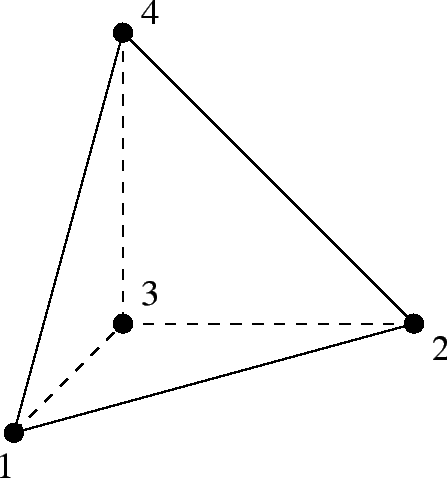FourNodeTetrahedron
From OpenSeesWiki
Jump to navigationJump to search
This command is used to construct a standard four-node tetrahedron element objec with one-point Gauss integration.
| element FourNodeTetrahedron $eleTag $node1 $node2 $node3 $node4 $matTag <$b1 $b2 $b3> |
| $eleTag | unique element object tag |
| $node1 $node2
$node3 $node4 |
four nodes defining element boundaries, input order is shown in the figure. |
| $matTag | tag of nDMaterial |
| '$b1 $b2 $b3 | body forces in global x,y,z directions |
Because sometimes bricks will give you headaches! Use this if you don't care much about the stress/strain fields (tets are notoriously bad). Otherwise, you can use the 10-node quadratic tetrahedron (in development).
NOTE:
- The valid queries to a FourNodeTetrahedron element when creating an ElementRecorder object are 'forces', 'stresses,' ('strains' version > 2.2.0) and 'material $matNum matArg1 matArg2 ...' Where $matNum refers to the material object at the integration point corresponding to the node numbers in the isoparametric domain.
- This element can only be defined in -ndm 3 -ndf 3
EXAMPLE:
REFERENCES:
Carlos Felipa's AFEM Course: Chapter 9 The Linear Tetrahedron.
Code Developed by José A. Abell at Universidad de los Andes, Chile
